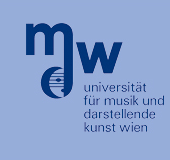Abstract

Noam Amir; Harel Primack
Acoustic Pulse Reflectometry (APR) is a common method used to measure the impulse response of a system, such as a room, tube, or musical wind instrument. Classically, it is based on the generation of one or many acoustic pulses and measuring the reflections generated in the object. Today, APR encompasses the use of more complex excitation signals, the most common of them being either a swept-sine or a Maximum Length Sequence (MLS). Both methods have been found to excite nonlinearities in the instrumentation system, most often in the loudspeaker. When using MLS, these nonlinearities crop up as spurious, artifactual peaks in the impulse response. In this paper we describe an improved MLS signal, termed here WMLS. This signal is obtained through a specific form of lengthening the original MLS signal using a tunable parameter. The net result is an impulse response with greatly reduced non-linear artifacts. Correct selection of the WMLS signal can bring the artifacts down to the level of the background noise, effectively eliminating them altogether. We present a comparison of measurements using both standard MLS and WMLS excitations, demonstrating the feasibility of WMLS and the improvement in the resulting signal to noise ratios.

